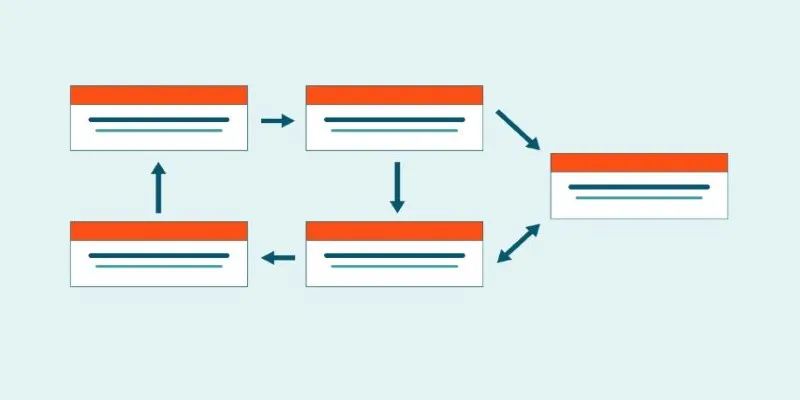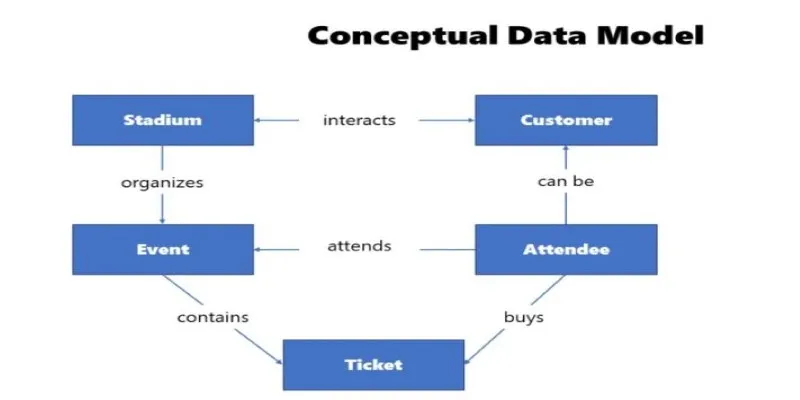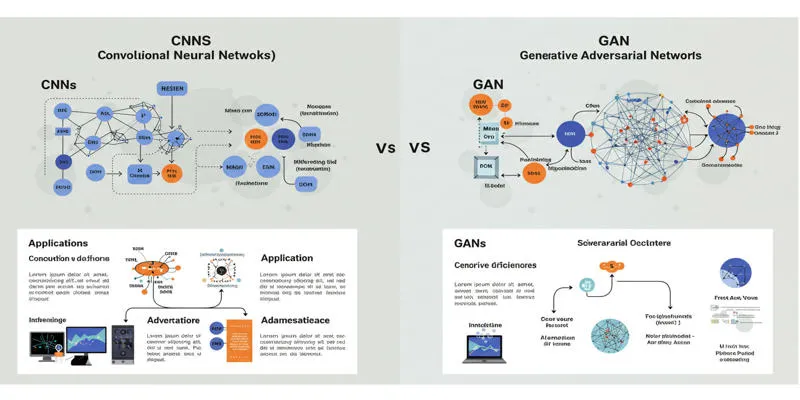Data is the cornerstone of all digital systems, influencing how organizations manage information, make decisions, and develop technology solutions. However, raw data is not useful unless organized meaningfully. This is where conceptual data modeling comes in. It provides a high-level blueprint for data structuring, establishing key entities and their relationships before any database construction begins.
Unlike technical models filled with implementation specifics, a conceptual model focuses on understanding business requirements and simplifying complex information structures. This approach helps businesses and developers communicate using the same language, ensuring data is structured to support real-world processes.
The Purpose of Conceptual Data Modeling
Conceptual data modeling is the initial step in defining how data should be organized within a system. Rather than diving into technical details, it maintains a broader perspective by identifying the most essential data elements. The model serves as a reference, allowing stakeholders—from business analysts to software developers—to agree on the necessary data and its interrelations. By establishing this foundation early, organizations can avoid confusion, minimize costly mistakes, and develop databases aligned with real- world processes.
A significant advantage of conceptual data modeling is its ability to bridge the gap between business users and technical teams. Business users often struggle to understand technical diagrams filled with tables, indexes, and keys. In contrast, a conceptual model presents data in a straightforward and comprehensible manner, using common terms to describe information. For example, in a medical setting, a conceptual model might define entities like “Patient,” “Doctor,” and “Appointment,” illustrating their interconnections. This clarity ensures everyone shares a common understanding before proceeding to database design and implementation.
In addition to clarity, conceptual data modeling offers long-term flexibility. As companies evolve, their data needs change. If a database is created without planning, modifications can be costly and challenging. By starting with a high-level model, companies can anticipate future growth and design extendable data structures, reducing the likelihood of significant changes later.
Key Elements of a Conceptual Data Model
A conceptual data model comprises three main elements: entities, attributes, and relationships. Each plays a crucial role in structuring data to align with real-world scenarios.

Entities are the building blocks of a conceptual model, representing major data objects an organization needs to track. These could be tangible items, such as “Customer” or “Product,” or abstract concepts like “Order” or “Transaction.” Entities are typically depicted as rectangles in conceptual diagrams, making them easy to identify.
Attributes describe the characteristics of each entity. For instance, if “Customer” is an entity, its attributes might include “Name,” “Email,” and “Phone Number.” Attributes add meaning to the data, providing the details that make each entity unique. They are often listed within the entity box to indicate the type of information that needs to be stored.
Relationships define how entities are connected. Real-world data is rarely isolated; instead, different pieces of information relate to each other in meaningful ways. In a conceptual model, relationships are depicted with lines linking entities. For example, in a retail database, a “Customer” entity might be connected to an “Order” entity, illustrating that each customer can place multiple orders. These relationships help ensure data is logically structured and supports organizational operations.
Unlike detailed technical models, conceptual models do not include specifics like foreign keys, indexes, or data types. The goal is to focus on the big picture rather than implementation details. This simplicity facilitates stakeholders’ understanding and refinement of the model before development begins.
The Benefits of Conceptual Data Modeling
One of the most significant benefits of conceptual data modeling is its ability to prevent costly mistakes. When organizations skip this step and rush into database development, they often encounter problems too late. Issues such as missing relationships, poorly structured data, or inconsistent definitions can lead to major setbacks. By taking the time to create a conceptual model first, teams can identify potential issues early and make necessary adjustments before any code is written.

Another advantage is improved communication. A well-designed conceptual model serves as a common reference point, enhancing team collaboration. Business users can verify that the model captures their needs, while technical teams can use it as a guide for database design. This shared understanding reduces misunderstandings and accelerates development.
Conceptual data modeling also supports better decision-making. When data is organized clearly and structured, businesses can extract valuable insights more easily. Whether analyzing customer behavior, tracking sales trends, or optimizing supply chains, a well-structured database enables data-driven decisions with confidence.
Scalability is another key benefit. As businesses grow, their data requirements change. A well-planned conceptual model ensures that databases can expand without major disruptions. Instead of implementing patches later, organizations can design flexible structures from the outset, allowing for efficient scaling.
Finally, conceptual data modeling enhances data consistency. When data is not properly structured, inconsistencies arise—different departments may use different definitions for the same information, leading to confusion and errors. By defining entities, attributes, and relationships upfront, organizations ensure that data remains consistent across all systems.
Conclusion
Conceptual data modeling is a crucial step in designing structured and efficient data systems. By focusing on high-level organization rather than technical specifics, it ensures that data aligns with real-world business needs. This approach minimizes costly errors, improves team communication, and allows for scalable growth. Without a solid conceptual model, organizations risk confusion, inefficiencies, and rigid database structures. Investing in this initial planning phase saves time and resources while creating a data foundation that supports future expansion. Whether for a small application or a large enterprise, conceptual data modeling lays the groundwork for a structured, adaptable, and effective data system.
 zfn9
zfn9












